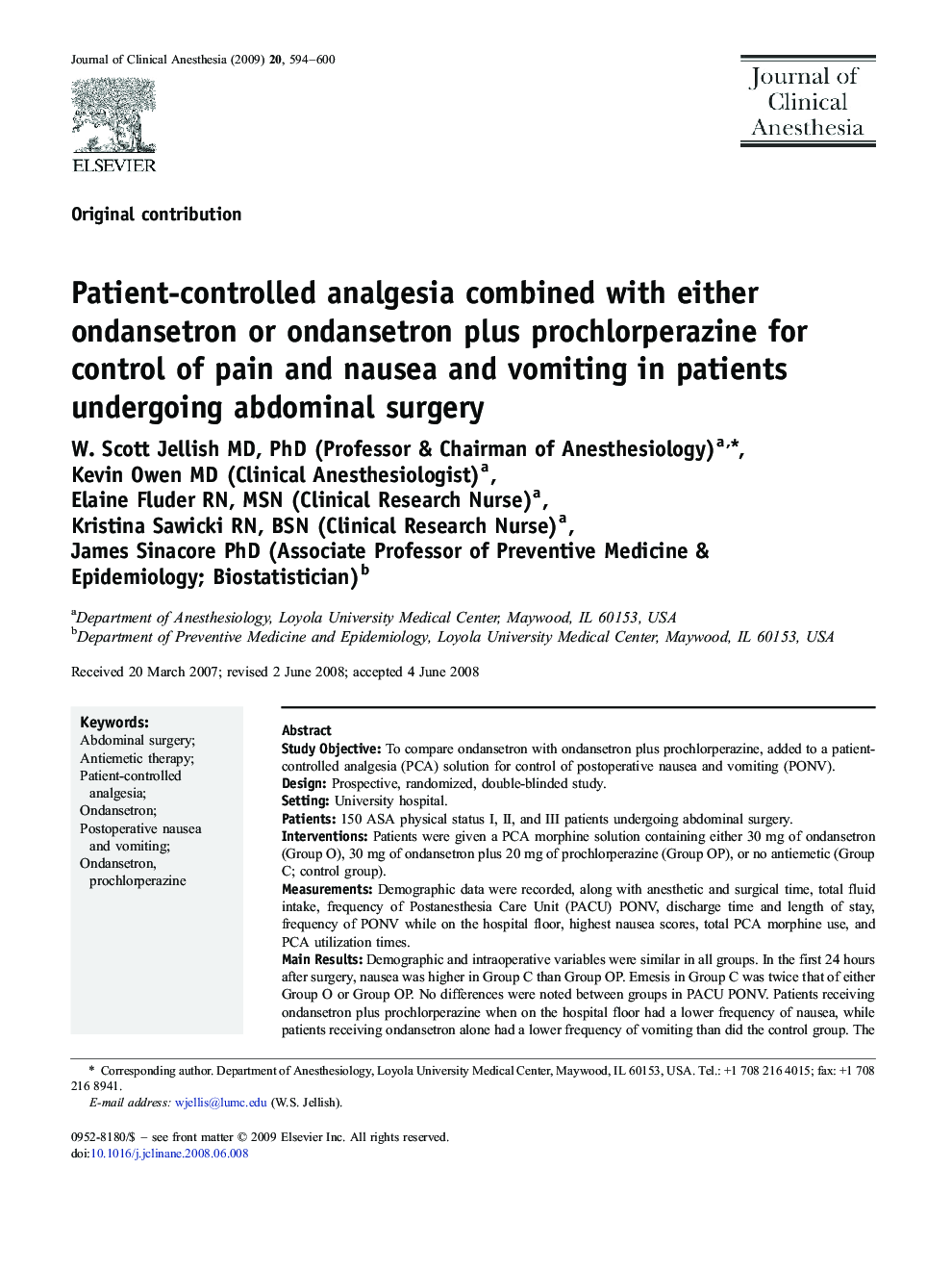| Article ID | Journal | Published Year | Pages | File Type |
|---|---|---|---|---|
| 2764092 | Journal of Clinical Anesthesia | 2008 | 7 Pages |
Study ObjectiveTo compare ondansetron with ondansetron plus prochlorperazine, added to a patient-controlled analgesia (PCA) solution for control of postoperative nausea and vomiting (PONV).DesignProspective, randomized, double-blinded study.SettingUniversity hospital.Patients150 ASA physical status I, II, and III patients undergoing abdominal surgery.InterventionsPatients were given a PCA morphine solution containing either 30 mg of ondansetron (Group O), 30 mg of ondansetron plus 20 mg of prochlorperazine (Group OP), or no antiemetic (Group C; control group).MeasurementsDemographic data were recorded, along with anesthetic and surgical time, total fluid intake, frequency of Postanesthesia Care Unit (PACU) PONV, discharge time and length of stay, frequency of PONV while on the hospital floor, highest nausea scores, total PCA morphine use, and PCA utilization times.Main ResultsDemographic and intraoperative variables were similar in all groups. In the first 24 hours after surgery, nausea was higher in Group C than Group OP. Emesis in Group C was twice that of either Group O or Group OP. No differences were noted between groups in PACU PONV. Patients receiving ondansetron plus prochlorperazine when on the hospital floor had a lower frequency of nausea, while patients receiving ondansetron alone had a lower frequency of vomiting than did the control group. The adjusted odds of vomiting doubled for every 12 hours for Group C patients when receiving PCA.ConclusionsCombination antiemetics added to PCA reduced emetic symptoms after abdominal surgery.
